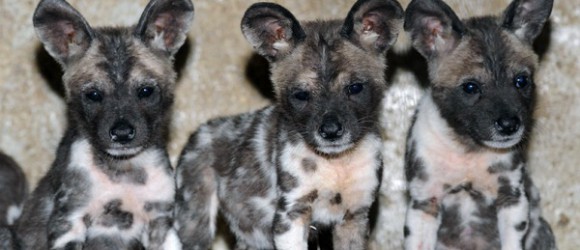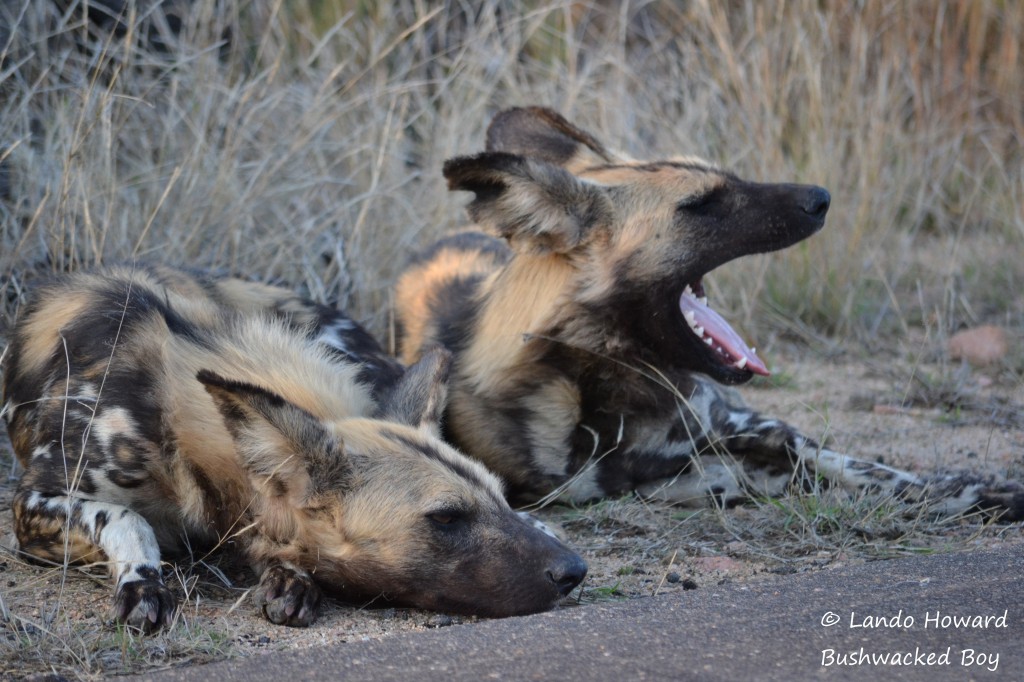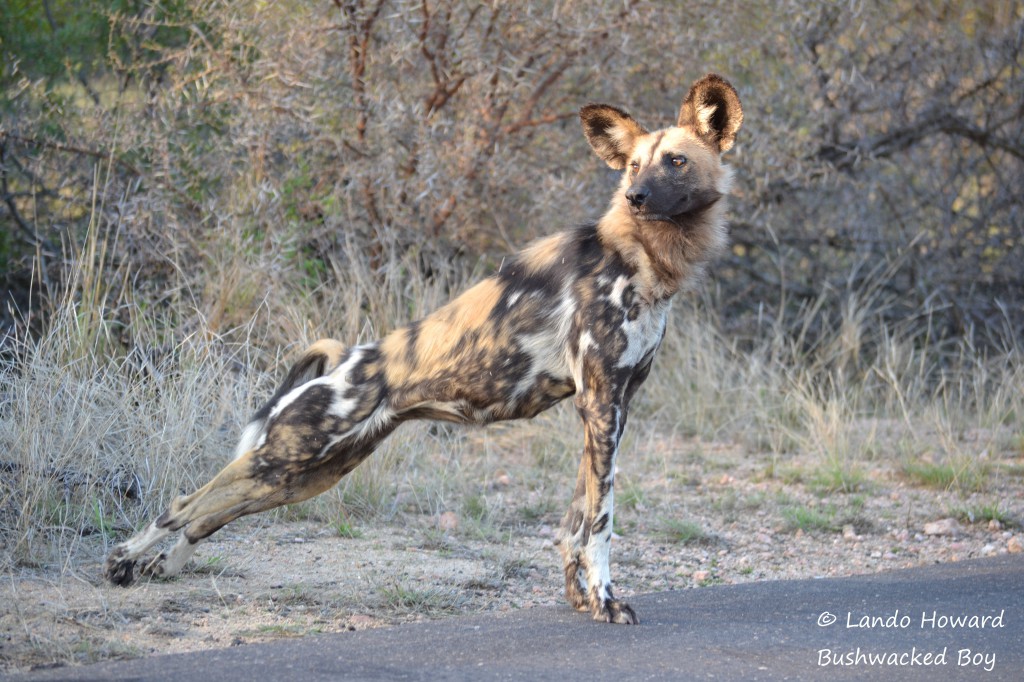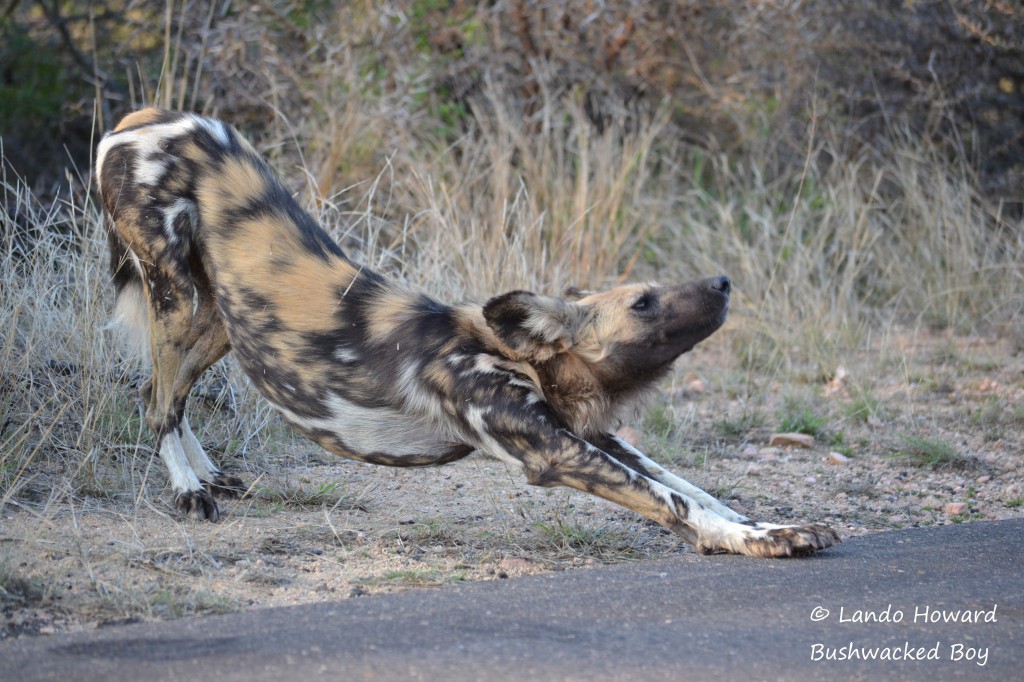African Wild Dog
- At September 29, 2013
- By Rosemary Wright
- In Guest Writers
 2
2

African Wild Dog
By Lando Howard – Guest Writer
The African wild dog or ‘painted dog’ (Lycaon Pictus) is South Africa’s most endangered carnivore and the second most endangered carnivore on the whole African continent.
When one considers that they only number approximately 6600 globally (although some regard their numbers to be as low as 3 000) when compared to the white rhino that currently numbers 20 000, it is understandable why the African wild dog is classified as endangered. They are furthermore considered to be extinct in 23 African countries.
There has long existed a very negative misconception of the African wild dog. Their misunderstood hunting techniques led them to be considered vermin by farmers and game wardens and they were historically eradicated. Currently due to their fragmented habitat it is difficult for their nomadic lifestyle to be supported and their populations are suffering from diseases such as rabies and distemper, particularly from coming into contact with domesticated animals. In-breeding due to their limited population size has also reduced their life-expectancy, with the wild dogs in the KrugerNational Park having an average life expectancy of only 6 years. Furthermore, due to the high levels of poaching the wild dogs very often fall victim to snares.
On all my travels to the African bush I have only ever encountered these animals on four occasions, with two of these being in respect of the same pair of dogs. When I now frequent the bush I not only keep my eyes peeled for the elusive leopard, but also keep my ears attuned for the high-pitched yelping of these canines.
Wild Dog Lifestyle
Wild dogs live in packs of between 12 and 30 individuals, although groups of up to 50 individuals have been recorded. Each individual wild dog has a unique pattern on its coat and this ensures easy identification of individuals. This blotchy yellow, black and white coat is also the reason for the name ‘painted dog’.
Of the individuals only one pair, known as the alpha pair, breeds. This is known as ‘cooperative breeding’ and all the dogs cooperate to support the breeding effort of the alpha dogs. There is also a beta pair and if something happens to one of the alpha dogs the beta dog will replace the alpha dog. At times the beta pair will breed, but the alpha females will then kill or steal the puppies from the beta pair.
The dogs use disused aardvark burrows as dens. The pups are born without sight and are helpless and remain in the burrow to develop. All non-breeding members take turns to perform various functions, including looking after the young and hunting.
Wild dogs hunt by a technique known as ‘coursing’ whereby they relentlessly chase their prey until it reaches the point of exhaustion. They can sustain speeds of between 50 and 60 km/h for several kilometres. The wild dogs will then disembowel the prey once it reaches a standstill, which is an extremely quick manner of killing the prey, particularly when compared to the suffocation techniques of the cats. The prey will be very quickly eaten so as to avoid attracting larger carnivores to the kill. After a successful hunt the hunting pack will regurgitate the food at the den for the puppies and ‘babysitters’ to feed on.
There is very little aggression within a wild dog pack and all of the dogs perform ritual greeting ceremonies, which occur from when the wild dogs are pups. Furthermore, every dog in the pack submits to the alpha pair and this also assists in maintaining order amongst the pack.
If you are travelling to South Africa, the best chance of spotting these rare dogs will be within the KrugerNational Park, although there are some private reserves and farms in which some wild dog packs occur.
Lansdo’s beautiful photographs of the African Wild Dog were taken in Kruger National Park in September 2012




Follow – A BEATING HEART